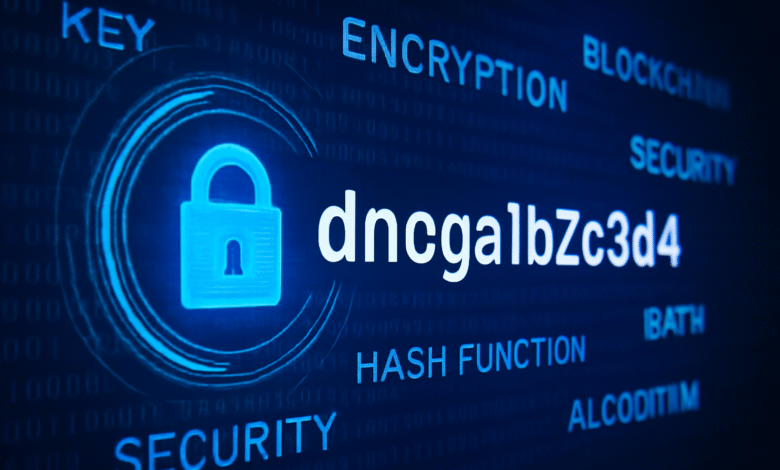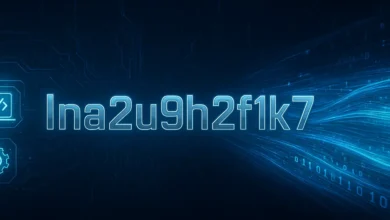The Importance of “Dnoga1b2c3d4” in Cryptography and Data Security

In the evolving world of technology, data security is more critical than ever. From financial institutions to personal communications, encryption is the cornerstone of safeguarding sensitive information. Among the various cryptographic systems, the term “dnoga1b2c3d4” has become a symbolic representation of complex encryption methods and security protocols. This article explores the meaning, significance, and applications of “dnoga1b2c3d4,” shedding light on its relevance in fields such as cryptography, data security, and artificial intelligence (AI).
What Does “dnoga1b2c3d4” Represent?
The term “dnoga1b2c3d4” is often associated with encryption keys, tokens, or hash values in the world of cryptography and data protection. Although seemingly abstract, it holds substantial importance in securing communication, ensuring data privacy, and preventing unauthorized access. Let’s break down its potential meanings:
- Encryption Key Representation:
- Strings like “dnoga1b2c3d4” can act as encryption keys in symmetric encryption algorithms, such as AES (Advanced Encryption Standard) or ChaCha20. These alphanumeric sequences serve as unique identifiers that encrypt and decrypt data.
- Such encryption keys are central to secure transactions and private communications over the internet.
- Hash Function Output:
- Another common usage of sequences like “dnoga1b2c3d4” is in hashing algorithms, where they represent the output of cryptographic functions such as SHA-256. Hash functions generate fixed-size outputs, which are used to verify data integrity, ensuring that the data has not been tampered with during storage or transmission.
- Tokenization:
- In tokenization processes, “dnoga1b2c3d4” could represent tokens that replace sensitive information, such as credit card numbers or personal identification details. This process is crucial for ensuring the security of personal data in industries like finance and healthcare.
The Role of “dnoga1b2c3d4” in Modern Cryptography
Cryptography forms the bedrock of data security in today’s digital age. The string “dnoga1b2c3d4” could serve as a key or token in various encryption schemes, enabling secure communication and safeguarding sensitive information. Let’s examine some of the ways this alphanumeric string could play a crucial role:
1. Symmetric Encryption Systems
In symmetric encryption, the same key is used for both encryption and decryption. Keys like “dnoga1b2c3d4” are pivotal in encrypting large volumes of data securely. Systems such as AES and Blowfish use fixed-length keys to perform these operations.
- For instance, a 128-bit or 256-bit AES key might be represented in a format like “dnoga1b2c3d4.” This key is then used to encrypt plaintext data, which can only be decrypted by the same key.
2. Asymmetric Encryption and Public Key Infrastructure (PKI)
In asymmetric encryption, different keys are used for encryption and decryption. Public and private key pairs, often represented by strings like “dnoga1b2c3d4,” enable secure data exchange over open networks. RSA, ECC, and DSA are commonly used algorithms in this domain.
- The string could also be used to represent a public key in a PKI system, ensuring secure communications between entities. In secure communications like TLS/SSL, the public key (often in the form of an alphanumeric string) is used to encrypt messages, while the private key is used for decryption.
3. Blockchain and Cryptocurrency
This may also have applications in the realm of blockchain and cryptocurrency. In blockchain systems, each transaction is verified by a hash function, producing unique strings that ensure data integrity.
- A string like “dnoga1b2c3d4” could represent a transaction ID or a block identifier in a blockchain, ensuring that each block of transactions is unique and verifiable.
Applications of “dnoga1b2c3d4” in Data Security
Beyond encryption, the use of strings like “dnoga1b2c3d4” extends to numerous applications aimed at protecting sensitive data. Here are some key areas where these strings are crucial:
4. Data Integrity and Hashing
Hash functions are used to generate a fixed-size string (like “dnoga1b2c3d4”) that represents the data. These are instrumental in ensuring the integrity of data. When two parties exchange information, they compare the hash values of the transmitted data to ensure no tampering has occurred.
- Common hashing algorithms like MD5, SHA-1, and SHA-256 generate such strings, and their integrity verification is essential in systems like digital signatures and message authentication codes (MACs).
5. Tokenization in Payment Systems
In payment systems, sensitive financial data is often tokenized to replace it with a token such as “dnoga1b2c3d4.” These tokens are useless to unauthorized individuals and can only be mapped back to the original data by the payment processor or authorized entity.
- PCI-DSS standards require tokenization in payment systems to protect cardholder data, ensuring secure transactions without exposing sensitive information.
6. Cloud Security and Encryption
Cloud platforms like AWS, Microsoft Azure, and Google Cloud use encryption keys similar to “dnoga1b2c3d4” to encrypt and decrypt data at rest and in transit.
- String values like “dnoga1b2c3d4” ensure that unauthorized users cannot access cloud-stored data without the proper encryption key. Additionally, this is vital for meeting compliance regulations such as GDPR and HIPAA.
“dnoga1b2c3d4” and Artificial Intelligence
The role of strings like “dnoga1b2c3d4” extends into the domain of artificial intelligence (AI), particularly in data preprocessing and model security.
7. Tokenization in AI Models
In the field of Natural Language Processing (NLP), tokens like “dnoga1b2c3d4” are used to represent words, characters, or symbols in machine learning models. AI models, including GPT-3 and BERT, process these tokens to generate meaningful predictions and responses.
- “dnoga1b2c3d4” could serve as a placeholder for special tokens or masked words that help in language model training.
8. Secure AI Data Anonymization
AI models require vast amounts of data for training, which can include sensitive personal information. Strings like “dnoga1b2c3d4” are often used in the data anonymization process to replace personally identifiable information (PII) with pseudonyms. This ensures that the data remains usable for training while maintaining privacy.
Optimizing Data Security with “dnoga1b2c3d4”
For businesses and individuals working with sensitive data, leveraging strong encryption and tokenization methods, such as those represented by “dnoga1b2c3d4,” is essential. Here are some steps to implement best practices:
- Use Strong Encryption Algorithms: Implement algorithms like AES-256 for symmetric encryption and RSA-2048 for asymmetric encryption to protect data across communications.
- Adopt Blockchain Technology: For secure transaction logging, employ blockchain to ensure the immutability and transparency of your records.
- Cloud Security: Ensure that sensitive data in the cloud is encrypted and tokenized to prevent unauthorized access.
- Anonymize Sensitive Data: Use pseudonymization and tokenization techniques to anonymize sensitive data used in AI models.
Conclusion: The Future of “dnoga1b2c3d4” in Data Security
The alphanumeric string “dnoga1b2c3d4” is more than just a random sequence; it represents a critical component in modern cryptographic systems, data security, and artificial intelligence. As technology continues to advance, the role of secure tokens, encryption keys, and hashed values will remain central to protecting sensitive information and ensuring privacy.
By embracing robust security protocols and understanding the applications of this in cryptography, businesses and individuals can stay ahead in the fight against cyber threats, ensuring that their data remains safe in an increasingly connected world.



